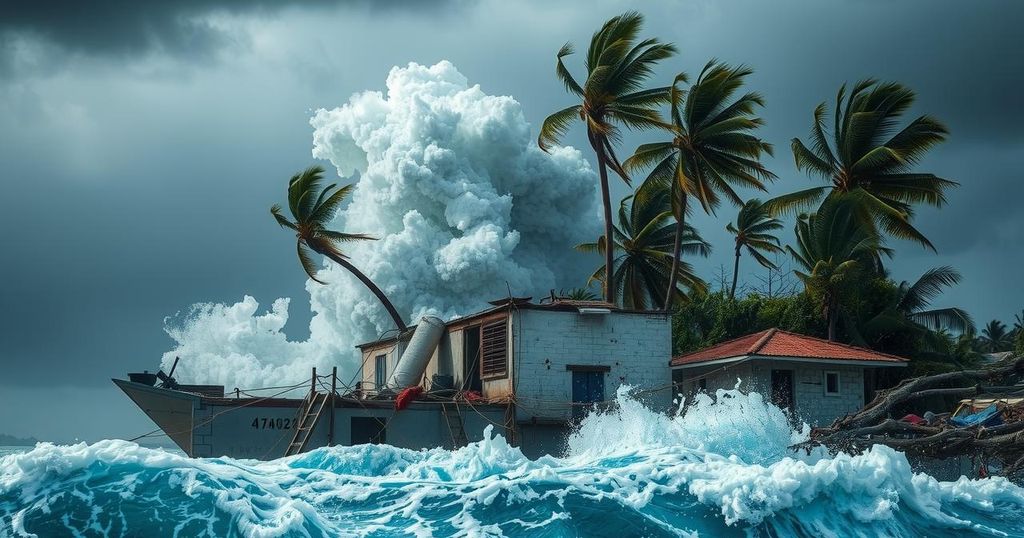Weather
World news
AFRICA, BLANTYRE, CHI, CHIDO, CHIP, CHIPILIRO KHAMULA, COMOROS, COMOROS ARCHIPELAGO, DEATH TOLL, DEPARTMENT OF DISASTER MANAGEMENT AFFAIRS, DISASTER MANAGEMENT, FLOODING, FLOODS, INDIAN OCEAN, KASUNGU, KHAMULA, LILONGWE, LUCY MTILATILA, MACHINGA, MADAGASCAR, MALAWI, MALAWI DEPARTMENT OF CLIMATE CHANGE AND METEOROLOGICAL SERVICES, MONSOON, MOZAMBIQUE, NACALA, NATURAL DISASTERS, SALIMA, U. N. OFFICE FOR THE COORDINATION OF HUMANITARIAN AFFAIRS
Marcus Chen
0 Comments
Damaging Effects of Tropical Cyclone Chido in Malawi: An Overview
Tropical Cyclone Chido has killed at least seven people in Malawi and affected over 30,000 others. The storm caused widespread destruction, particularly in southern districts, resulting in significant infrastructure damage. Relief efforts are underway while the storm has weakened, and classes have resumed after a brief suspension.
Tropical Cyclone Chido has wreaked havoc in Malawi, resulting in the deaths of at least seven individuals and affecting over 30,000 more, according to disaster officials. The Malawi Department of Disaster Management Affairs released a preliminary assessment indicating that the storm significantly damaged infrastructure, including schools and health facilities. Most fatalities occurred in various districts: Salima, Kasungu, Machinga, Blantyre, and Lilongwe, with a total of 16 injuries reported. The cyclone originated northeast of Madagascar and made landfall near Nacala, Mozambique, before moving through Malawi, bringing heavy rains and flooding to 17 districts, particularly in the southern region. Currently, the storm has weakened, and educational institutions have resumed operations following a temporary suspension.
Cyclone Chido developed in the Indian Ocean and made its presence felt in neighboring countries, especially Mozambique, where it affected more than 174,000 people. The aftermath of the storm necessitated a coordinated response from the Malawi government and humanitarian agencies to assist those impacted. The storm’s trajectory and intensity highlighted the vulnerabilities of the affected regions, particularly in relation to climate patterns and disaster preparedness.
In summary, Tropical Cyclone Chido has had a devastating impact in Malawi, highlighting the urgent need for improved disaster preparedness and response mechanisms in the region. The loss of life and extensive damage to infrastructure underscore the challenges faced by communities in recovering from natural disasters. Vigilance against future storms remains critical, as stated by officials monitoring conditions in the Indian Ocean.
Original Source: www.voanews.com




Post Comment